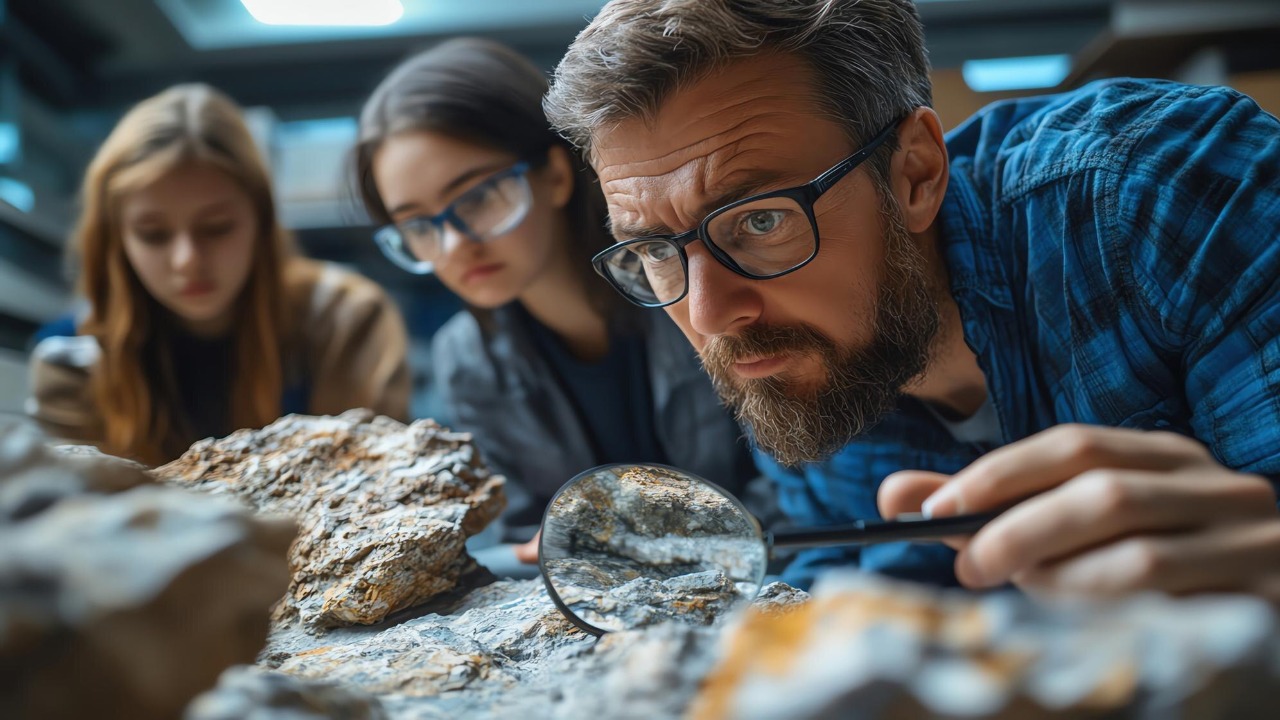
Stumbling upon a meteorite might seem like a once-in-a-lifetime event, but it’s not as uncommon as you might think. What’s crucial, however, is knowing how to handle such a cosmic treasure to preserve its scientific value. Space rock experts have recently outlined a comprehensive guide to help anyone who finds a meteorite navigate the process, emphasizing the importance of immediate and careful action.
Recognizing a Potential Meteorite
Identifying a meteorite can be tricky, as they often resemble ordinary Earth rocks. However, certain physical characteristics can help distinguish a space rock. For instance, meteorites often have a fusion crust – a thin, glassy exterior formed as the meteorite melts while passing through the Earth’s atmosphere. They may also exhibit regmaglypts, thumbprint-like indentations, and a metallic sheen, unlike most Earth rocks.
There are also basic field tests that can help identify a potential meteorite. The streak test, for instance, involves rubbing the rock on a piece of unglazed porcelain tile. Meteorites usually leave no streak or a faint one, unlike many Earth rocks. Another test is checking for magnet attraction, as most meteorites contain iron and are therefore magnetic. However, it’s important to avoid invasive methods that could damage the sample. Recent amateur finds have been verified using these techniques.
First Actions at the Discovery Site
Once you’ve identified a potential meteorite, it’s crucial to document the find. Take photos of the meteorite and its surroundings, note the GPS coordinates, and describe the environment. This information can aid in classification and origin tracing. It’s also important to avoid touching the meteorite with bare hands, as skin oils or microbes can contaminate the sample.
If the meteorite is partially buried, it’s important to recover it with minimal disturbance. Space rock experts recommend using clean tools and gloves to carefully extract the specimen. This helps preserve the meteorite’s condition and prevents further contamination.
Proper Handling and Storage
Proper storage of a meteorite is crucial to maintain its scientific value. In the short term, the meteorite should be wrapped in a soft cloth and kept in a dry, cool place away from direct sunlight. This helps prevent risks like oxidation or fragmentation, which can degrade the sample. Past cases have shown how improper storage can lead to loss of valuable information.
For transport, padded containers are recommended. These provide protection against physical damage and further contamination. Following these guidelines from space rock specialists can help ensure the meteorite reaches experts in the best possible condition.
When and How to Contact Experts
Once the meteorite is safely stored, it’s time to reach out to experts for authentication. Institutions like the Meteoritical Society or local universities often have experts who can verify your find. It’s important to follow their contact protocols and provide all the information you’ve gathered.
The submission process for analysis can vary, but many institutions offer free or low-cost options for genuine finds. There are also numerous stories of successful collaborations between finders and scientists, as detailed in expert explanations.
Legal and Ethical Considerations
It’s also important to be aware of the legal and ethical considerations when finding a meteorite. Ownership laws can vary by country. In the U.S., for example, meteorites found on public land belong to the government, while those found on private property belong to the landowner. It’s crucial to understand these laws to avoid legal complications.
From an ethical standpoint, reporting finds is important to contribute to global databases and advance scientific knowledge. Selling a meteorite prematurely can deprive the scientific community of valuable research material. There are also international treaties on meteorites to consider, which prohibit illegal export of these cosmic treasures.
The Scientific and Cultural Value
Meteorites hold immense scientific and cultural value. They provide insights into the history of our solar system, with their composition offering clues about the materials present during its formation. For instance, some meteorites contain presolar grains – tiny particles older than the sun itself!
They also hold cultural significance. Indigenous communities, for example, often view meteorites as sacred objects. Historical meteorite falls have also shaped folklore and influenced art and literature. Public finds play a crucial role in advancing research and enriching our understanding of the universe, as recent expert insights highlight.
So, if you’re lucky enough to find a meteorite, remember – it’s not just a rock. It’s a piece of the cosmos, holding secrets of our solar system’s past and possibly, clues to its future.
More from MorningOverview